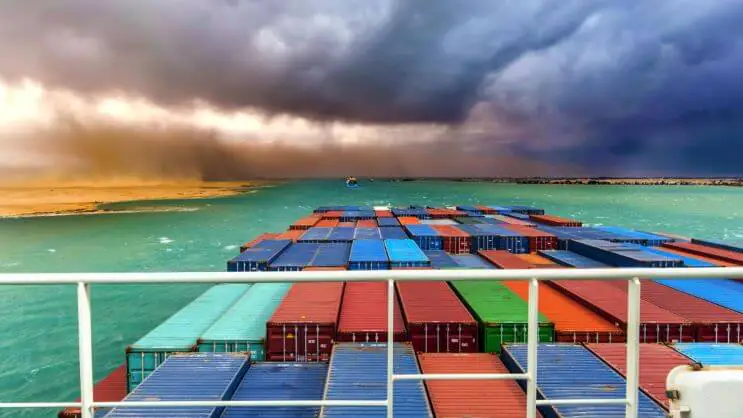Suez Canal shipping: a brief history and practical information
Suez Canal shipping: Europe’s trade gateways
What is this article talking about?
The following article provides a brief history of the Suez Canal, measuring its impact on international transportation. You can learn how shipping through Egypt resolved significant logistical challenges for European imports, which struggled to meet the increasing demand for goods transported from Asia.
Discover the crucial impact of proper loading on cargo ships and how it influences maritime transportation. Explore its importance for international intermodal container transportation and get practical information about container loading for sea freight. We also comment on current geopolitical events and how unpredictable developments in the Suez Canal region pose risks to international trade and transportation.
Discovering Suez Canal history
What is the Suez Canal?
The Suez Canal is a sea waterway in Egypt connecting the Mediterranean Sea to the Red Sea. It is the shortest route between Europe and the Indian and Pacific Oceans, covering 193 kilometers from Port Said to Suez. The canal uses lakes, has no locks, and has eight major bends. To the west is the Nile River delta and to the east is the Sinai Peninsula. Before its completion on November 17, 1869, Suez was the main settlement along its banks.
Studying the history of the Suez Canal is essential to understanding the economic situation during its construction years. The events preceding 1869 in Europe directly influenced the development of the canal. In 1858, Ferdinand de Lesseps established the Suez Canal Company to construct the canal. From that point forward, united companies from Britain and France collaborated to build the canal, which remains under Egyptian authority today. [1] [2]
Why was the Suez Canal developed?
The situation in Europe in 1848 was highly uncertain, marked by upheavals caused by short-term economic factors, particularly a severe food supply shortfall between 1845 and 1847. The European continent experienced a revolution and an industrial slump. Concurrently, the United States was engaged in the First Opium War with China in the 1840s and the second war from 1857 to 1859, aiming to open lucrative Chinese markets to Western trade. Examining this historical context provides insights into the cause of the development of the Suez Canal. There was a serious need to modernize the actual state of trade, and the Suez Canal effectively shortened the intra-transit way, reducing the journey distance from the Arabian Sea to London by approximately 8,900 kilometers. There were, of course, many other benefits, but shortening their initial time was the most impactful.
Today, the Suez Canal is vital in transporting energy supplies, consumer goods, and various components for modern machinery from Asia and the Middle East to Europe. The Suez Canal handles 12-15% of global trade and 25-30% of container traffic.
Its strategic localization positions it as a central hub for shipping oil, hydrocarbons, and other fossil fuels. The canal facilitates the transfer of approximately 7-10% of the world’s oil and 8% of liquefied natural gas. There is also an unprecedented level of shipped oil, with about one million barrels passing daily. In 2019, the canal transported 53.5 million tonnes of ores and metals and 35.4 million tonnes of coal. [1] [2]
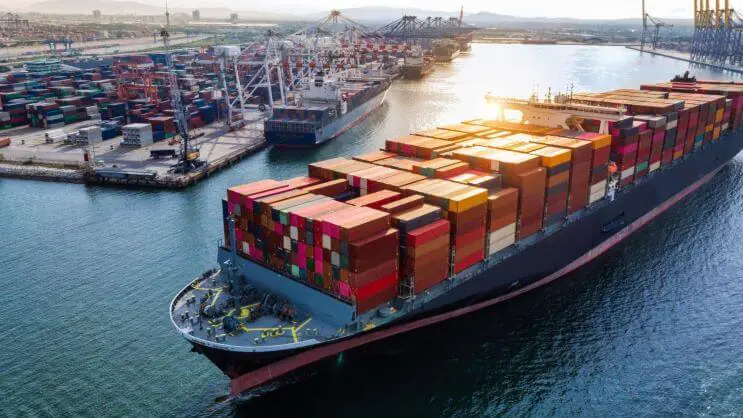
Suez Canal transit and sea shipping benefits
As we mentioned, the Suez Canal has shortened transit time by about 8 days (the maximum in transit today is about 16 days depending on the size of the cargo ship). In 2021, more than 20,600 vessels traversed the canal, averaging 56 daily. This number increased roughly when, in 2014, the Suez Canal Authority (SCA) started enlarging and widening the canal to increase the daily capacity of vessels to 97 by 2023. No later than 2015, the Egyptians opened a 35 km expansion of the Suez Canal, enabling two-way traffic for most of the route and allowing larger vessels to transit. In that way, they could accommodate ships up to 400 meters in length.
What are the benefits of sea shipping by using the Suez Canal?
The benefits of using the Suez Canal for shipping are the following freight advantages:
Time efficiency
The canal significantly reduces transportation time. This transportation solution shortened trips by about 8 days.
High ship traffic
More than 20,600 ships have passed through the canal in 2021. The Suez Canal is a busy and important route for maritime trade.
Economic impact
The canal’s strategic location and efficiency contribute to the economic prosperity of countries involved in maritime trade. It is the easiest way to promote global trade.
Two-way traffic and larger ships
Bi-directional traffic and the ability to accommodate larger ships have the effect of increasing the versatility of the canal.
Lower transportation costs
The shorter route and increased capacity contribute to cost savings for shipping companies. This is what makes using this mode of shipping economically attractive.
Strategic importance
The canal serves as a critical waterway for international shipping. It connects the Mediterranean Sea to the Red Sea and provides a direct route between Europe and Asia.
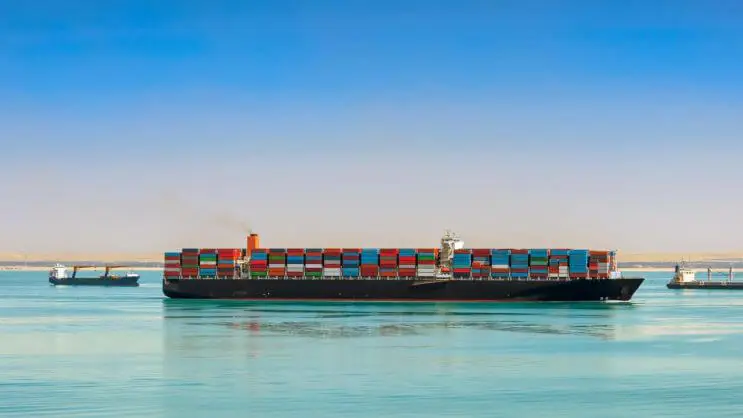
Strategic shipping route for International trade
The importance of the Suez Canal has consistently increased and any disruptions along the canal significantly impact international trade. While there have been historical developments causing occasional delays in transportation, none have been as significant as two specific incidents that occurred in the last decade.
The Ever Given: Locking down the Suez Canal’s
On March 21, 2021, Ever Given, one of the largest container ships ever built, blocked the Suez Canal for six days. The Suez Canal traffic incident was caused by the cargo ship with dimensions of 400 meters in length, 59 meters at its widest, and a depth of 16 meters below the waterline, weighing 220,000 tons. The root cause of this incident was either a navigation error or, as its owners initially stated, high winds during a sandstorm pushing the ship sideways, wedging it into both banks of the waterway. Here are the outcomes of this accident:
Backlog: The crisis escalated as more ships joined the backlog, with some 450 stopped ships at each end of the canal.
Financial issue: Egypt demanded compensation of $900 million for lost revenues and costs. [2] [3]
Global freight in dangerous: Houthi attacks
Another major problem with the Suez Canal has been determined lately a year ago. Starting in December 2023, shipping companies have changed their routes away from the Red Sea due to the actions of the Iranian-allied Houthi movement. The group has initiated attacks on ships in the Suez Canal. The reason for these actions was Iran’s support for the Palestinians in Gaza over Israel’s war. In response, the United States and Britain carried out airstrikes against Houthi forces. Here is the outcome:
Longer port call times: Freight passing through the Suez Canal has dropped by 45% in the two months since the attacks by Yemen’s Houthis, meaning cargo ships will use other waterways.
Increased supply prices: Food prices went up, feeling the impact of terrorist aggression, adding about half of the increases due to higher transportation costs in some cases. [4]
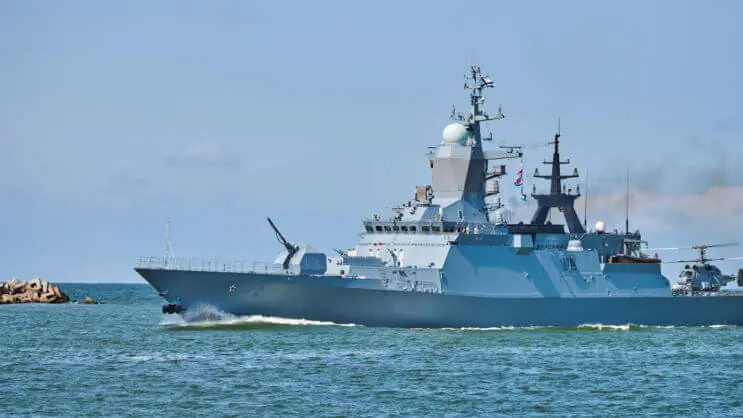
Practical information: Suez Canal fees and LCL shipping rates
By utilizing intermodal transport companies and shipping through the sea, businesses worldwide can significantly benefit from a unified shipping system using containers. When planning shipments from Asia to reach Europe, the route often involves crossing the Suez Canal. For this purpose, carriers need to consider pricing factors that enable them to transport their cargo most sustainably and cost-effectively. We have selected two pricing factors in container shipping that are crucial for importing goods with sea freight from Asia through the Suez Canal.
FCL and LCL container
Real transportation costs begin with container space during the loading process at manufacturing companies and food plantations in the APAC region (Asia). By using container space efficiently, companies can reduce the number of containers to be shipped, resulting in lower costs. LCL, short for less than a container load, refers to shipping cargo not large enough to fill a full 20- or 40-foot shipping container. Full container loads (FCL) are about the complete loading of the container. These two terms are important factors to think about while shipping containers. Along with this comes different shipping rates.
Considering modern container loading methods, companies are implementing load planning software that greatly helps optimize the use of container space while maintaining safety standards in shipping. Here are the examples where load planning software helps manage container shipping within sea freight:
Optimized container loading capacity
Automated calculation of efficient loading sequences maximizes container load utilization. You can manage faster load planning results and handle more orders with fewer containers.
Fewer load planning errors
Planning software minimizes human errors in logistics, reducing operational and transportation costs. It ensures correct loading and reduces the risk of damaged goods and delivery errors.
Time and cost savings
Cargo planning software streamlines the cargo planning process. It saves time for both planners and drivers. Overall, it reduces operating costs by optimizing the use of resources and minimizing unnecessary bookings for sea shipping.
Industry-specific cargo
Cargo planning software helps customize a loading plan for various cargo such as food, machinery, or high-tech, requiring unique features and shipping requirements.
Enhanced safety and regulatory compliance
Planning software ensures compliance with safety regulations during cargo deployment. It minimizes the risk of accidents caused by unbalanced cargo. This approach contributes to overall safety during transportation.
Minimized reverse sea booking
The software reduces the likelihood of errors and thus minimizes operational hassles associated with incorrect deliveries and cargo mix-ups. It can also minimize the need to re-book containers for sea freight.
What is the Suez Canal cost?
Once shipping through the Suez Canal is planned, carrier rates are not applicable. Along with shipping costs for vessel and container cargo, there are also toll fees applicable for crossing the canal. 13 different tariffs are separate for dry-bulk cargo and Tanker. For both types of cargo, Suez Canal Net Tonnage (SCTN) parameters of standard sizes are applicable. The SCTN is calculated for the time the vessel moves through the Canal. Here are examples of SCTN tonnage calculators:
Dry-bulk – SCNT for standard sizes

Handy (28 000 – 40 000 dwt): SCNT 16 000 – 24 000
Handymax (42 000 – 50 000 dwt): SCNT 26 000 – 28 000
Supramax (50 000 – 60 000 dwt): SCNT 28 000 – 32 000
Ultramax (60 000 – 70 000 dwt): SCNT 32 000 – 38 000
Panamax (70 000 – 82 000 dwt): SCNT 39 000 – 42 000
Post-panamax 82 000 dwt – 98 000 dwt): SCNT 42 000 – 52 000
Mini Capesize (100 000 – 130 000 dwt): SCNT 54 000 – 68 000
Capesize (168 000 – 182 000 dwt): SCNT 85 000 – 92 000
Newcastlemax (200 000 – 220 000 dwt): SCNT 100 000 – 100 800
Tanker – SCNT for standard sizes
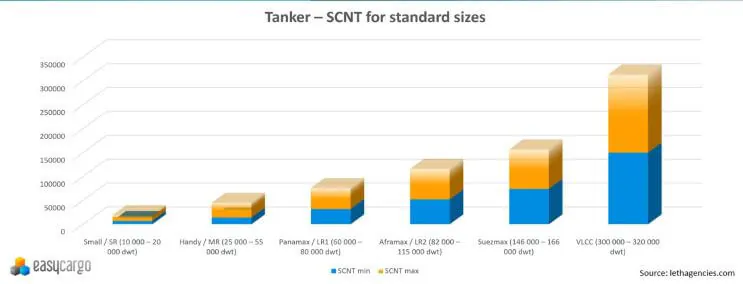
Small / SR (10 000 – 20 000 dwt): SCNT 7 000 – 12 000
Handy / MR (25 000 – 55 000 dwt): SCNT 14 000 – 31 000
Panamax / LR1 (60 000 – 80 000 dwt): SCNT 32 000 – 44 000
Aframax / LR2 (82 000 – 115 000 dwt): SCNT 52 000 – 64 000
Suezmax (146 000 – 166 000 dwt): SCNT 74 000 – 83 000
VLCC (300 000 – 320 000 dwt): SCNT 150 000 – 164 000
Most likely, these fees are already included in your overall costs since they are on the carrier side, so there is no need to worry about them. However, understanding geopolitical situations is crucial for comprehending potential increases in shipping prices, as it remains an essential component of your entire shipping cost. [5]
Final takeaway
The Suez Canal has a long history that continues to influence today’s international transportation. Understanding the current geopolitical situation is crucial to staying up-to-date with factors that impact shipping costs. Even single events happening in the region surrounding the Suez Canal can affect economies located thousands of miles away from Egypt. Companies frequently use load planning software to handle day-to-day operations and lower shipping costs, bringing various benefits and reducing costs. There is a proven track record that utilizing load planning software can aid in managing international shipping with containers through sea freight.
EasyCargo provides load planning software for your cargo, whether you choose to ship by land or sea. Our platform for load planning can be utilized for sea freight in intermodal transport, as well as for road freight. Discover how your business can benefit from lower shipping fees using our platform. Contact us today to learn more.
Reference:
[1] Suez Canal: https://en.wikipedia.org/wiki/Suez_Canal
[2] The Importance of the Suez Canal to Global Trade – 18 April 2021: https://www.mfat.govt.nz/en/trade/mfat-market-reports/the-importance-of-the-suez-canal-to-global-trade-18-april-2021/#:~:text=The%20Suez%20canal%20is%20a,shipping%20oil%20and%20other%20hydrocarbons.
[3] How One of the World’s Biggest Ships Jammed the Suez Canal: https://www.nytimes.com/2021/07/17/world/middleeast/suez-canal-stuck-ship-ever-given.html
[4] Freight through Suez Canal down 45% since Houthi attacks – UNCTAD: https://www.reuters.com/world/middle-east/freight-through-suez-canal-down-45-since-houthi-attacks-unctad-2024-01-26/
[5] Suez Canal Rates: https://lethagencies.com/suez-calculator

